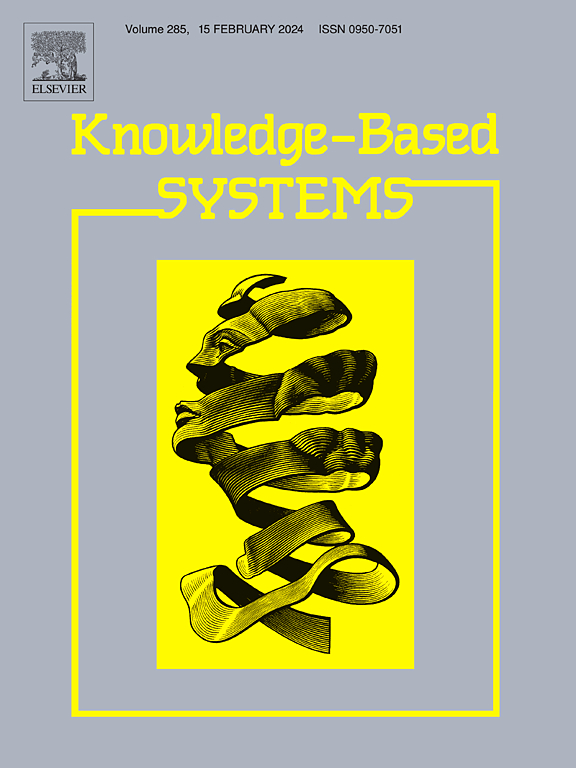双向融合:在激光雷达与相机融合中使用语义引导转换器的双向交叉融合框架
IF 7.2
1区 计算机科学
Q1 COMPUTER SCIENCE, ARTIFICIAL INTELLIGENCE
引用次数: 0
摘要
多传感器模态融合在三维物体检测任务中具有显著优势。然而,将多模态特征融合到鸟瞰图(BEV)空间的现有方法往往会遇到各种挑战,如特征错位、语义信息利用不足以及 Z 轴深度估计不准确,从而导致性能不理想。为了解决这些问题,我们提出了基于变换器的新型多模态融合框架--Bi-Interfusion。Bi-Interfusion 采用双向融合架构,包括像素语义绘画、高斯深度先验分布模块和语义指导对齐模块等组件,以克服传统融合方法的局限性。具体来说,Bi-Interfusion 采用双向交叉融合策略来合并图像和激光雷达特征,从而生成多传感器 BEV 特征。这种方法利用了由 LiDAR 点生成的精炼高斯深度先验分布,从而提高了视图转换的精度。此外,我们还应用了像素语义绘制技术,将图像语义信息嵌入激光雷达点云,从而促进更全面的场景理解。此外,我们还利用基于变换器的模型来建立多传感器 BEV 特征之间的软对应关系,从而捕捉位置依赖关系并充分利用语义信息进行配准。通过对 nuScenes 基准数据集的实验,Bi-Interfusion 的性能有了显著提高,在三维物体检测任务中实现了 72.6% 的 mAP 和 75.4% 的 NDS 的优异性能。本文章由计算机程序翻译,如有差异,请以英文原文为准。
Bi-Interfusion: A bidirectional cross-fusion framework with semantic-guided transformers in LiDAR-camera fusion
Multi-sensor modal fusion has shown significant advantages in 3D object detection tasks. However, existing methods for fusing multi-modal features into the bird’s eye view (BEV) space often encounter challenges such as feature misalignment, underutilization of semantic information, and inaccurate depth estimation on the Z-axis, resulting in suboptimal performance. To address these issues, we propose Bi-Interfusion, a novel multi-modal fusion framework based on transformers. Bi-Interfusion incorporates a bidirectional fusion architecture, including components such as Pixel-wise Semantic Painting, Gaussian Depth Prior Distribution module, and Semantic Guidance Align module, to overcome the limitations of traditional fusion methods. Specifically, Bi-Interfusion employs a bidirectional cross-fusion strategy to merge image and LiDAR features, enabling the generation of multi-sensor BEV features. This approach leverages a refined Gaussian Depth Prior Distribution generated from LiDAR points, thereby improving the precision of view transformation. Additionally, we apply a pixel-wise semantic painting technique to embed image semantic information into LiDAR point clouds, facilitating a more comprehensive scene understanding. Furthermore, a transformer-based model is utilized to establish soft correspondences among multi-sensor BEV features, capturing positional dependencies and fully exploiting semantic information for alignment. Through experiments on nuScenes benchmark dataset, Bi-Interfusion demonstrates notable performance improvements, achieving a competitive performance of 72.6% mAP and 75.4% NDS in the 3D object detection task.
求助全文
通过发布文献求助,成功后即可免费获取论文全文。
去求助
来源期刊

Knowledge-Based Systems
工程技术-计算机:人工智能
CiteScore
14.80
自引率
12.50%
发文量
1245
审稿时长
7.8 months
期刊介绍:
Knowledge-Based Systems, an international and interdisciplinary journal in artificial intelligence, publishes original, innovative, and creative research results in the field. It focuses on knowledge-based and other artificial intelligence techniques-based systems. The journal aims to support human prediction and decision-making through data science and computation techniques, provide a balanced coverage of theory and practical study, and encourage the development and implementation of knowledge-based intelligence models, methods, systems, and software tools. Applications in business, government, education, engineering, and healthcare are emphasized.
 求助内容:
求助内容: 应助结果提醒方式:
应助结果提醒方式:


